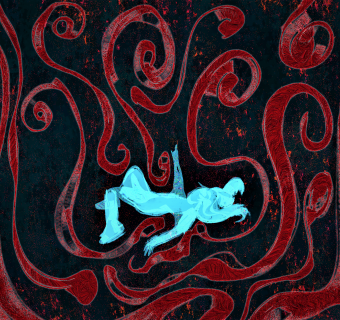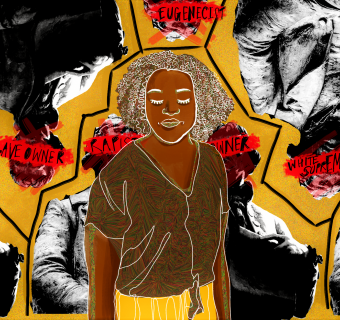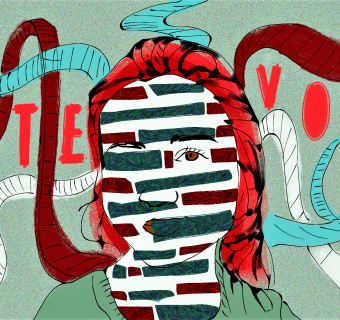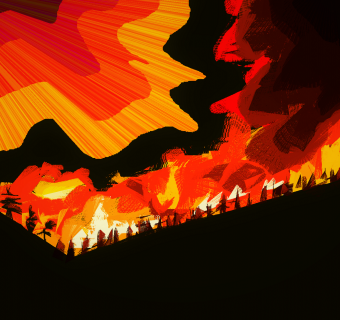When neo-Nazis marched at UVA on August 11th, they didn’t come in the KKK head-to-toe white garb that history textbooks showcase in black and white. They didn’t come with cloaked heads and hidden identities. They came as themselves, wearing costumes of “normalcy,” which made them all the more frightening.
Let’s face it. The majority of the student body at UVA dresses pretty predictably. While not necessarily in full effect today, the saying “girls in pearls, guys in ties” surrounding football games exists for a reason. The individual items and trends change, but the ideals of fitting in with peers and fulfilling class norms remain an end goal. Hence, the ubiquitous white button-downs, khaki shorts, and Sperries, all topped with the same haircut.
So what does it mean when horribly bigoted invaders are clothed in accordance with the hegemonic group of white males enrolled at UVA?
When a group of white males dresses in accordance with gender, race, and class norms, they are going to blend in with a community like Charlottesville, whose history involves sustained power structures that exist to give them voices. They have a space here; they look like they belong here. So while not everyone in the Charlottesville or UVA community is a reflection or representation of this dominant group, it seems important that they (white or at least upper-class men) still claim the power of the space, the power to create and form stereotypes. In response, the rest of us must look to those who do not fit into these roles, because their/our dissent gives insight into what resistance looks like.
 How can we resist and change these power structures and stereotypes? How can we physically show our dissent? Protestors at the BSA march showed literal resistance, right down to what they wore, notably white t-shirts adorned with black-marker statements such as: DENOUNCE HATE; BLACK LIVES MATTER; and OUR GROUNDS. No brand names, simply plain shirts with individual thoughts and statements of power stamped proudly across chests. These deliberate acts of disruption through clothing created more than just a projection of voices; they created a projection of corporeal space, putting literal bodies on the line and into the conversation to create an effect. True dissent redefines a place by altering the bodies we see in that space, by taking formerly silent or forgotten groups and thrusting them into the spotlight trained on Charlottesville these past weeks.
How can we resist and change these power structures and stereotypes? How can we physically show our dissent? Protestors at the BSA march showed literal resistance, right down to what they wore, notably white t-shirts adorned with black-marker statements such as: DENOUNCE HATE; BLACK LIVES MATTER; and OUR GROUNDS. No brand names, simply plain shirts with individual thoughts and statements of power stamped proudly across chests. These deliberate acts of disruption through clothing created more than just a projection of voices; they created a projection of corporeal space, putting literal bodies on the line and into the conversation to create an effect. True dissent redefines a place by altering the bodies we see in that space, by taking formerly silent or forgotten groups and thrusting them into the spotlight trained on Charlottesville these past weeks.
At UVA, it takes considerable courage to wear political statements stamped across your chest, instead of an anonymous, generic polo and khaki ensemble. Signaling your dissent through what you wear---despite an intrinsic understanding of a power system that tells you not to---proves not only that thought affects body, but that body affects thought. I find hope and inspiration in the idea that even in small ways, like what we wear, we can use our bodies to change the thoughts of others around us, and we can crumble the illusion that all UVA students must fit into one dominant group.
We can convey power through what we wear, but I wonder if it is enough simply to wear a shirt with a political statement and call it a day. Let's call it a start. Sartorial dissent combined with radical action allows us to voice and to live our activism. We can refuse to normalize white supremacy in its many forms, from those marching down the Lawn holding torches, to those dictating the norms of our everyday lives on Grounds. Putting marginalized bodies and voices into spaces where generic "nomalcy" usually dominates enables change on a large scale. We redefine what a place represents and what stereotypes speak for "us" through our choices -- sartorial and moral. We can and must interrogate the status quo and confront our complicity within it. If the normalized dominant groups at UVA don’t commit to conscious change, I fear UVA will never reach a new understanding or cultural definition. And that’s truly scary.
Photo credit:
Featured Photo by Andrew Shurtleff, © Daily Progress used with permission. Edited by Kirsten Hemrich.
Photo of student by Richard Dizon.








